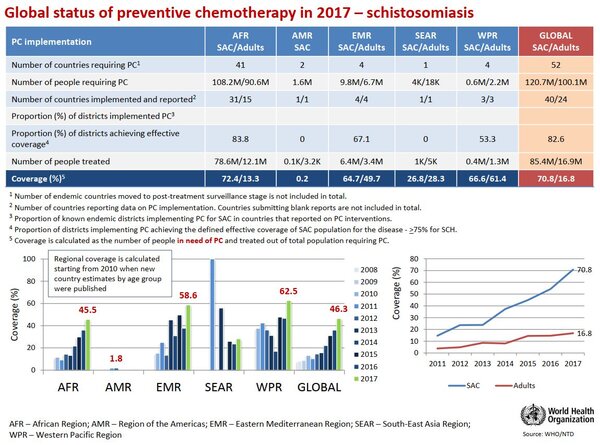Countries are reaching more and more people in need of treatment.
TThe World Health Organization (WHO) has reported that in 2017, countries affected by schistosomiasis managed to reach & treat over 100million people in need of treatment.
Regularly treating children and adults who are at risk of schistosome infections is vital to preventing the development of this debilitating disease, schistosomiasis, aka bilharzia. However with over 200million people in need of treatment, reaching all of them can be a logistical and political herculean task. In 2012, 42.1 million people were treated for schistosomiasis, accounting for only 14.4% of those in need of treatment (treatment coverage). The treatment coverage for school-aged children, a key target for treatment programmes to prevent the development of disease, was 25.9%. In 2015 45% of school-aged children in need of treatment were treated. The WHO reports that in 2017 70.8% of school-aged children in need of treatment were treated.
The new data for schistosomiasis shows:
- Over 100million people treated globally.
- 90.7 million people treated in the African Region.
- 70.8% school-age children needing treatment reached globally.
- 72.4% school-age children needing treatment reached in the African Region.
If this continues the WHO NTD Roadmap 2020 target for schistosomiasis, i.e. treating 75% of school-aged children in need of treatment, will be reached.
We hope this postive news will motivate all countries and partners to sustain or even increase efforts. With continued support and commitment we could reach all children and adults in need of treatment. Coordinating with other interventions, such as WASH, community engagement & behaviour change and snail control we could be well on our way to see schistosomiasis elimination as a public health problem, as well as transmission interruption in countries showing the most progress.
Find out more on the WHO PC data portal and the Expanded Special Project for the Elimination of NTDs (ESPEN) data portal here.
